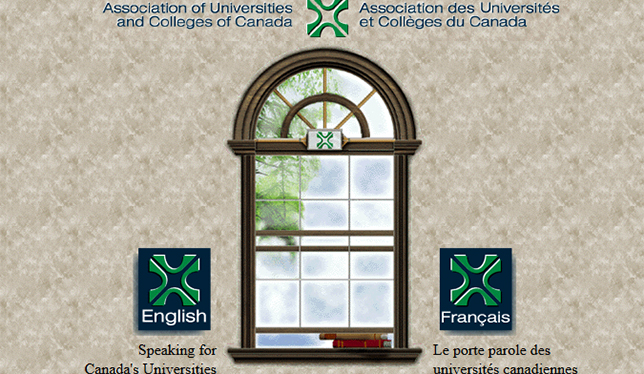From a final report of the publications committee regarding “a World Wide Web site for AUCC” (now Universities Canada, publisher of University Affairs) dated Jan. 10, 1996, almost exactly 20 years ago.

“If you build it, they will come.”
AUCC’s Publications Committee has been asked to study the issue of a World Wide Web site … and to make recommendations on whether and how to set up such a site. We conducted research by contacting other organizations, “visiting” web sites, discussing the issue with Internet providers and web developers. …
We believe this it is imperative for AUCC to set up a WWW site as soon as possible and that the web site would provide a series of benefits to the association. A web site is an important communications tool to encourage the two-way flow of information. … Although paper-based communication is not – and we believe, never will be – dead, it is being enhanced more and more frequently by communication through the Internet, and particularly web sites. …
Although there are some initial start-up costs, which would vary depending on the complexity of the site … we believe that the costs of maintaining the site would be minimal on an on-going basis.
[Regarding media relations]
A recent survey … showed that 38 percent of all Canadian newsrooms and freelancers are now hooked up to the Internet. … Although few reporters want to receive press releases by Internet (only 0.6 percent according to the survey), almost 40 percent said they use the Internet for research purposes.
[Regarding online publications]
Some publications lend themselves more easily to an electronic format [although] it is unlikely that readers will want to read an entire issue of University Affairs on-screen.
[Technological background]
Today, new technologies are being introduced that allow those who are less technology-oriented to create and develop web sites. Microsoft and Sun Microsystems, for example, have signed a letter of agreement to further develop the Java language created by Sun, which allows information providers to create web sites without the large amount of technical knowledge previously required. New products such as “Beyond Press” are also available that allow conversion of publications that are produced through desktop publishing program such as QuarkXPress to be easily mounted on the web. …
[And a helpful Appendix A explaining the Internet]
The Internet is an enormous network of heterogeneous networks and computers spread all around the world. The internet is being directly accessed by over 20 million people and another 30 million people are indirectly connected via electronic mail (e-mail). Often people misconstrue services such as Gopher and the World Wide Web (WWW) as being the Internet, but in fact, they are only one of many services that are offered on the Internet. Other popular uses of the Internet include SMTP or more commonly known as e-mail, FTP for copying files over the Internet, UseNet , which provides various newsgroups on the Internet, and Telnet, a protocol which allows users to remotely connect to other hosts on the Internet.
The AUCC website went live four months later, on May 1, 1996.